At a networking session of the largest ever gathering of responsible investment professionals which was held in Paris, we were excited to engage with other like-minded portfolio managers. However, the smell of attractive cologne and the sight of beautiful suits and fancy watches soon gave it away: these were not portfolio managers… these were marketing professionals!
Although our group has been a signatory of the UN Principles for Responsible Investment since 2010, this was the first year the investment team of the Evli Emerging Frontier Fund attended the PRI in Person conference. We have been enhancing the ESG component of our investment process for several years and viewed this conference as an opportunity to learn how other fund managers implement ESG considerations into their investment activities. We were disappointed to find that this conference was filled mostly with marketing professionals and heads of sustainable investing who in turn relay the message to the investment decision makers at their firms. However, in our experience, without buy-in from skeptical fund managers, the ESG implementation advice is generally disregarded.
On three different occasions when we mentioned to other portfolio managers that we were going to attend the conference, their responses were consistent: “Why?” “Is your firm making you go?” “Is it a marketing thing?”
While we did leave the conference with some valuable insights, our biggest conclusion was that until it’s filled with portfolio managers committed to investing responsibly, its impact will remain far below its potential.
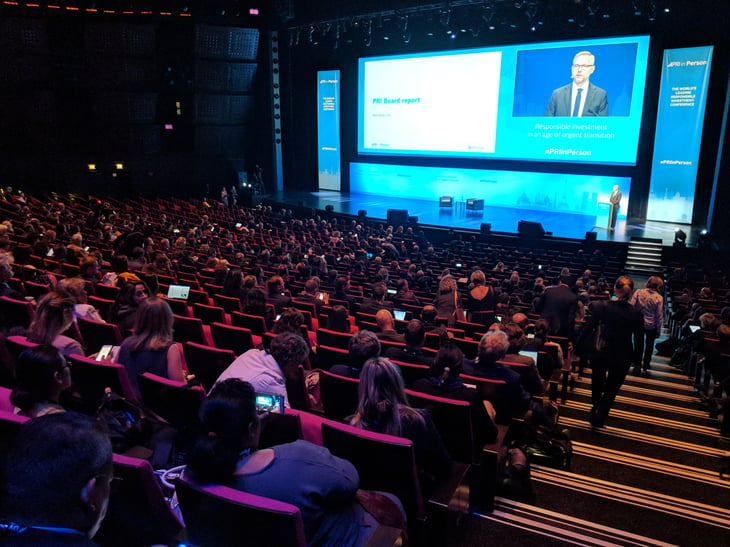 First plenary session of the conference with 1,800 “responsible marketers” in attendance
First plenary session of the conference with 1,800 “responsible marketers” in attendance
Why we attended
Why do we care enough about ESG to pay the expensive registration fee plus travel costs to attend this conference as a boutique investment firm which is highly conscious of how it allocates its clients’ fees?
First, inevitable policy change is not priced into the markets. This is especially the case in the developing countries where we invest, leaving investors exposed to significant risks. We looked forward to sessions such as the academic lecture on carbon pricing in portfolios.
Second, ESG can help increase returns. Academic studies suggest that investment strategies which implement sound ESG practices outperform traditional strategies. And the evidence is even stronger in emerging markets where 71% of studies report positive findings while only 4% report negative findings. However, we don’t need empirical evidence to be convinced that reducing exposure to risks related to climate change or human rights abuse can reduce investment volatility.
Third, clients care about it. Even if ESG weren’t to change the risk/reward equation, if two fund managers can produce the same return with the same risk budget, clients should prefer the one which produces the least negative externalities. Just as we wouldn’t appreciate a CEO who says his only job is to focus on making money with no care for pollution and employee wellbeing, we believe our clients would not want to hire a fund manager with the same attitude.
Finally, exclusion doesn’t solve problems. We recognize that problems cannot be solved by merely excluding certain industries and simply shifting securities from one investor to another. Rather, investors need to actively engage with companies to effect changes which make an actual difference.
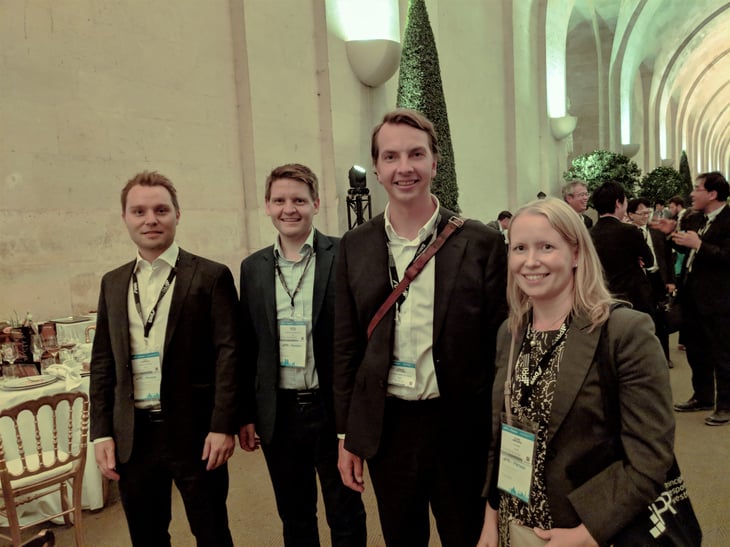 Fellow responsible investors from Finland attending the conference
Fellow responsible investors from Finland attending the conference
ESG 3.0
As ESG-minded investors, since the inception of our fund we have been acting to avoid harm to our investors by excluding high-risk industries and seeking companies with sound corporate governance practices. Last year, we stepped up our ESG efforts to benefit stakeholders by engaging with companies. We did this by creating an extensive questionnaire which seeks to understand how the company treats its stakeholders, be it through carbon footprint reduction, human capital development, or anti-corruption measures. We ask every company we meet to complete this questionnaire as the final step in our investment process, and after they return the questionnaire we provide feedback on what we see as their opportunities for improvement.
In one session of the conference, a presenter shared the ABC framework of responsible investing wherein the most basic form is Avoiding harm, the next step is Benefiting stakeholders, and the most advanced is Contributing to solutions. This ultimate form is about leaving no one behind by catering to the needs of underserved groups. This is perhaps best achieved through not only alignment with, but also acceleration of achievement of, the UN Sustainable Development Goals (SDGs). Doing this effectively requires impact investing, which addresses pressing social or environmental issues through capital which otherwise would not have been accessible.
Most impact investing is done through private equity. However, we learned that while the annual total spend required to achieve the SDGs is estimated at $2.7tn, private equity only invests less than $600bn per year, of which impact funds are only a tiny fraction. Meanwhile, the total retained earnings of all listed companies in the world is about $2tn. Essentially, the only way to achieve the SDGs is by moving the impact from billions to trillions by focusing on publicly listed companies.
We have spent much time reflecting on this presentation, and would like to enhance our ESG efforts further. We aspire to contribute to solutions to problems such as poverty, inequality and climate change through public equity investments in emerging markets, where the need for positive change is the greatest. However, we recognize that to bring scale to this effort, returns to our investors cannot be sacrificed. We will continue seeking the right approach.
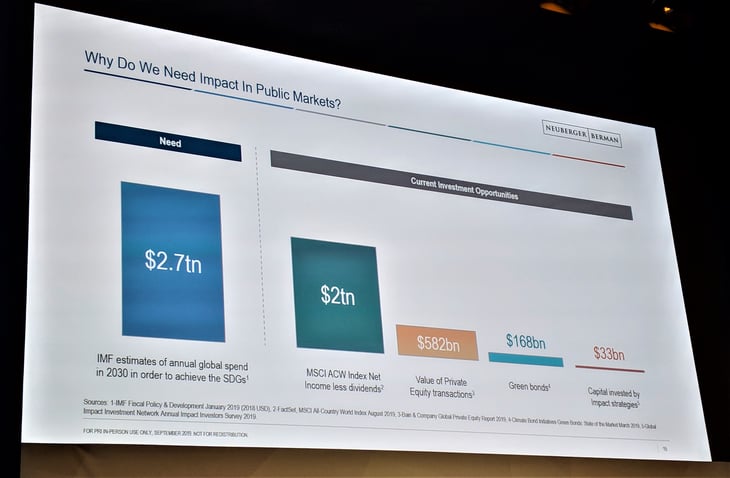 Slide showing that the large gap between total annual spend to achieve SDGs and private equity investment can be filled by the retained earnings of listed companies
Slide showing that the large gap between total annual spend to achieve SDGs and private equity investment can be filled by the retained earnings of listed companies
Reconnecting financial decision making with real-world outcomes
The most inspiring takeaway from the conference was that we as investment professionals have the opportunity to reconnect financial decision making with real-world outcomes of real people with real problems.
During the last session of the conference, two survivors of modern slavery connected the dots of how the money from human trafficking and child labor is funneled through the financial system, and how we as investment professionals have the power to help detect and abate such practices by “following the money”. Investors and lenders have the opportunity to demand that portfolio companies and debtors have effective anti-money laundering policies and perform rigorous supply chain due diligence to ensure human rights are being respected.
One of the conference speakers made an interesting point that while the regulators’ jurisdictions are limited to regions, asset managers can form an international bridge connecting best practices between markets. This is even more true for us as investors allocating capital across dozens of developing countries and managing a fund based in Finland, one of the most sustainable countries in the world.
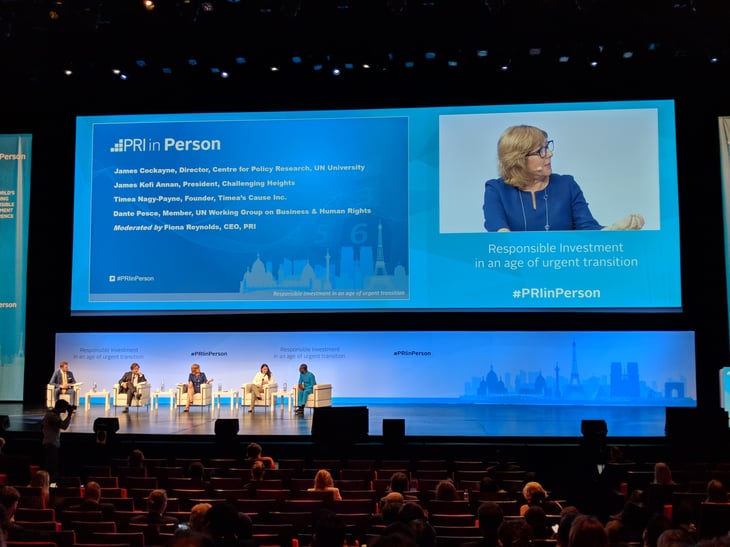 Human trafficking survivors share first-hand experience and discuss opportunities for investors to help stop modern slavery
Human trafficking survivors share first-hand experience and discuss opportunities for investors to help stop modern slavery
Investing in the world we want our children to live in
We believe all investment companies should be purpose-driven organizations actively effecting positive change. For us, it is not enough to passively invest in businesses and assume they will do the right things for people and the planet. We choose to invest in the world our children want to live in.
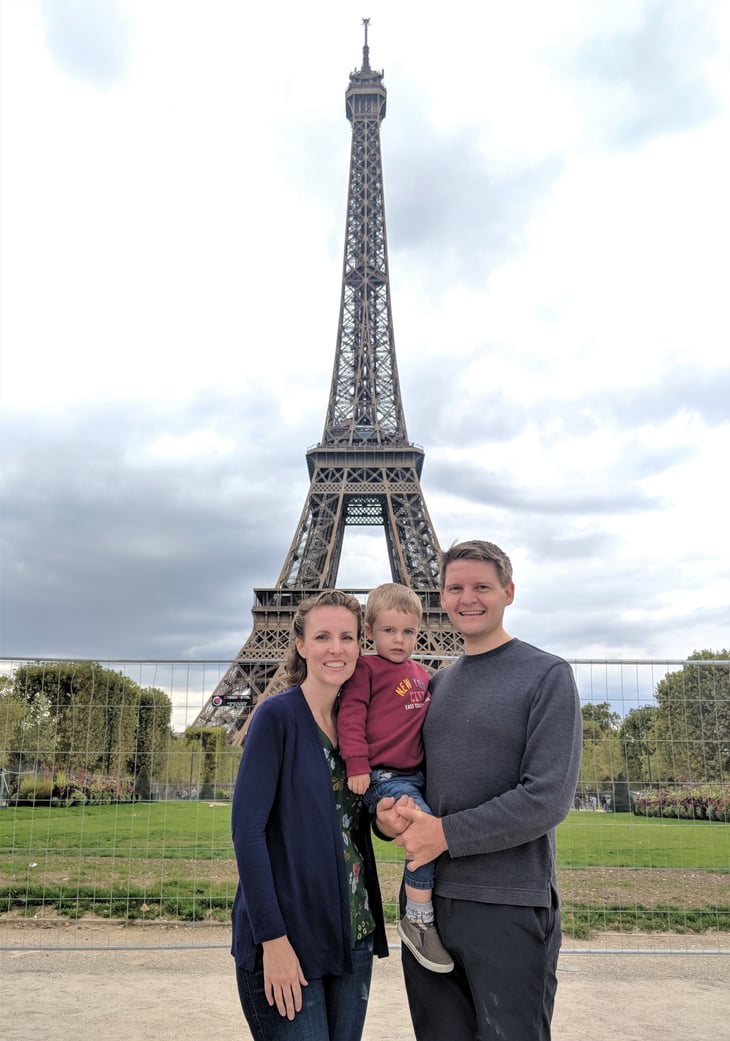 Burton Flynn visiting the Eiffel Tower with his 2-year son old after the conference
Burton Flynn visiting the Eiffel Tower with his 2-year son old after the conference

